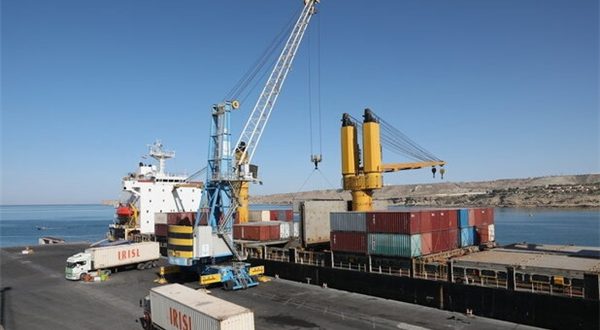Iran has considerably increased its export from the Southern province of Bushehr despite the US sanctions imposed on the country, a senior official said.
More than 830,000 tons of goods worth $157 million were exported from Iran’s southern Bushehr province to Qatar in the last Iranian year (ended March 19, 2020), Head of Bushehr province’s Industry, Mine and Trade Organization Seyed Hossein Hosseini said.
He noted that the figure indicate a 37% and 23% annual growth in terms of value and volume, respectively.
Minerals, construction materials and agricultural products were the main exports from Bushehr to the Persian Gulf country.
Iran and Qatar share longstanding amicable ties in the political and economic arena. The neighbors have been trying to boost their trade volume in the past years, thanks to the direct marine routes that have paved the way to realize this goal.
According to Hosseini, Dayyer, Bushehr and Buol Kheyr account for the largest portion of goods sent to Qatar in the said period.
In a relevant development in mid-March, a local official said that non-oil exports from Iran’s Southern province of Bushehr had posted a 20% jump in terms of weight in the past 11 months since late March 2019, in comparison with the corresponding period in the last year.
Director General of Bushehr Province Customs Behrouz Qarebigi said this morning that over 22 million tons of non-oil goods were exported from the province’s customs office during the 11 months of the current local calendar year which started on March 21, 2019.
He added that the exported items excluding gas condensates in Bushehr province were worth about $ 7.151 billion, up 20 percent from the same period a year earlier, in terms of weight.
Bushehr is considered as Iran’s main exports hub. Around 37.8 million tons of commodities worth $15.08 billion were exported from Bushehr during the last fiscal year (March 2017-18).
Qarebigi noted that during this period, Bushehr province’s customs exports, including gas condensate, amounted to about 23 million and 19 thousand tons of goods worth over $ 7 billion and 669 million.
Qarebigi also said that the main export commodities of Bushehr province include petrochemicals, gas condensates, minerals, aquatic, vegetable and poultry.
He said most of the province’s goods were exported to China, the United Arab Emirates, India, South Korea, Qatar, Pakistan, Brazil, Turkey and Malaysia.
Iranian officials started planning for policies to counter the US possible sanctions a year before US President Donald Trump entered into office in early 2017. The policies are now proving effective as economic indexes are indicating inefficacy of the US pressures.
Washington’s unilateral sanctions against Tehran began in November 2018, five months after US President Donald Trump withdrew from an international deal on Iran’s nuclear program.
Claiming that the bans were working properly, Trump tightened them in May 2019, only to see that Iran was finding new solutions to recoup the losses.
Early in July, Iranian Industry Minister Reza Rahmani said that despite US efforts to cripple Tehran’s economy, year-on-year comparison showed that the country’s domestic production increased in the first quarter of the local calendar year (March 21-June 21).
Early in January, Iranian Minister of Roads and Urban Development Mohammad Eslami said that the country’s exports have outpaced imports despite the harsh US sanctions.
Iran is the only state in the world without foreign debt as the country’s trade balance is now positive and exports have surpassed imports, Eslami said.
A great deal of development in the civil, water, electricity, gas and utility sectors have been made, and during the outrageous sanctions, the country has become a manufacturing workshop, he added.
In relevant remarks in December, Deputy Head of Iran Trade Development Organization Farhad Nouri said that the Iranian factories and manufacturers which were reliant on parts and intermediary products for their production are now either producing their needs themselves or buying them from their compatriot partners, adding that this is the plus point of US’ unilateral sanctions.
Sanctions are not a blessing but they have prepared the ground for economic activists to make efforts and the factories that imported their raw materials for more than two decades are now either producing themselves or buy them from local units, Nouri said in Arak, the central city of Markazi province.
He added that all types of goods worth 31.9 billion dollars were exported from Iran over the past nine months, reminding that trade worth of 63 billion dollars under the current economic condition is indebted to concerted efforts of the economic activists.
Nouri further noted that China, Iraq, UAE, Afghanistan and Turkey are major destinations for the Iranian exports while Turkey, UAE and Germany are biggest Iranian trade partners in field of imports.
 Iran Energy News Oil, Gas, Petrochemical and Energy Field Specialized Channel
Iran Energy News Oil, Gas, Petrochemical and Energy Field Specialized Channel




